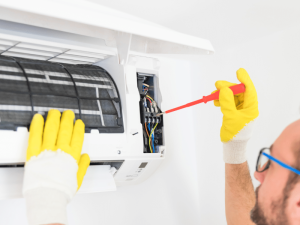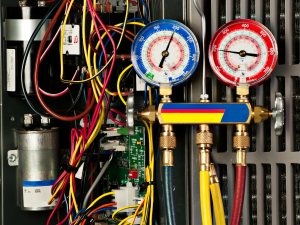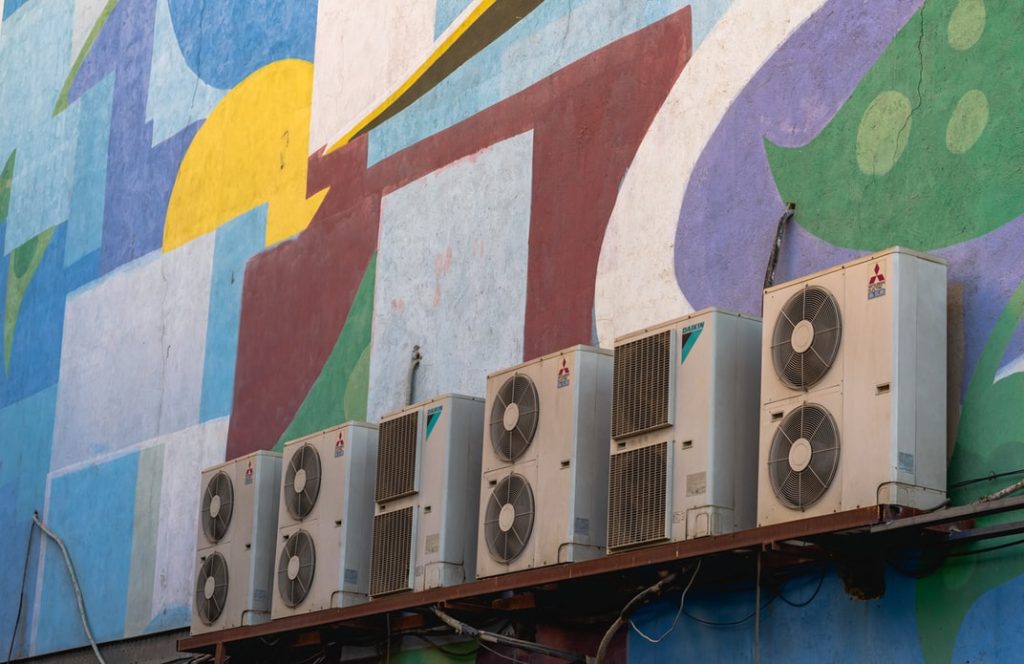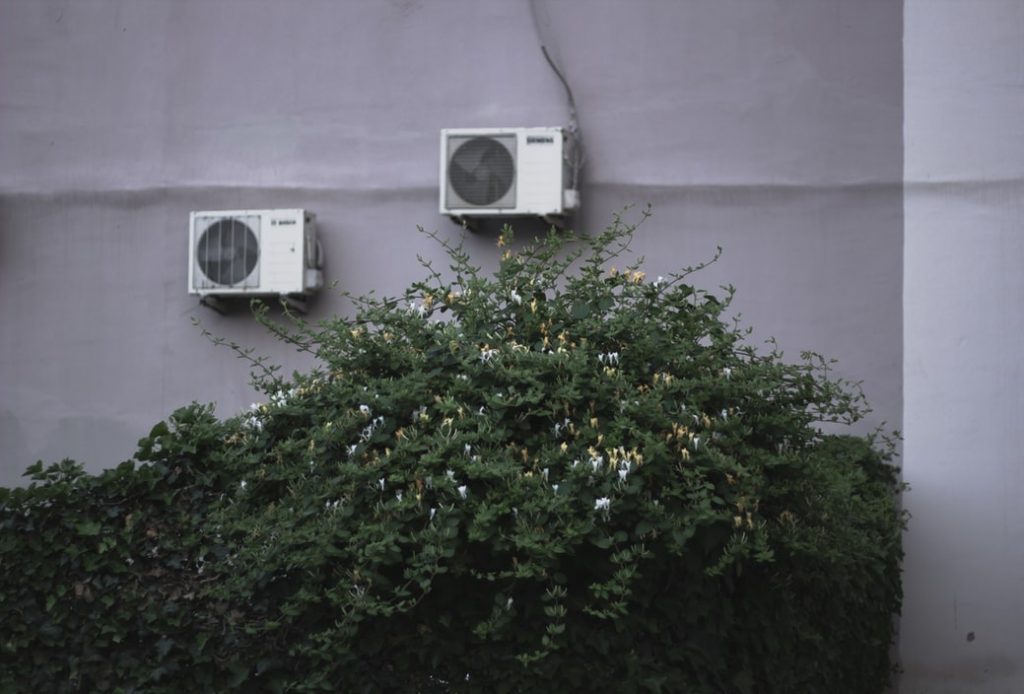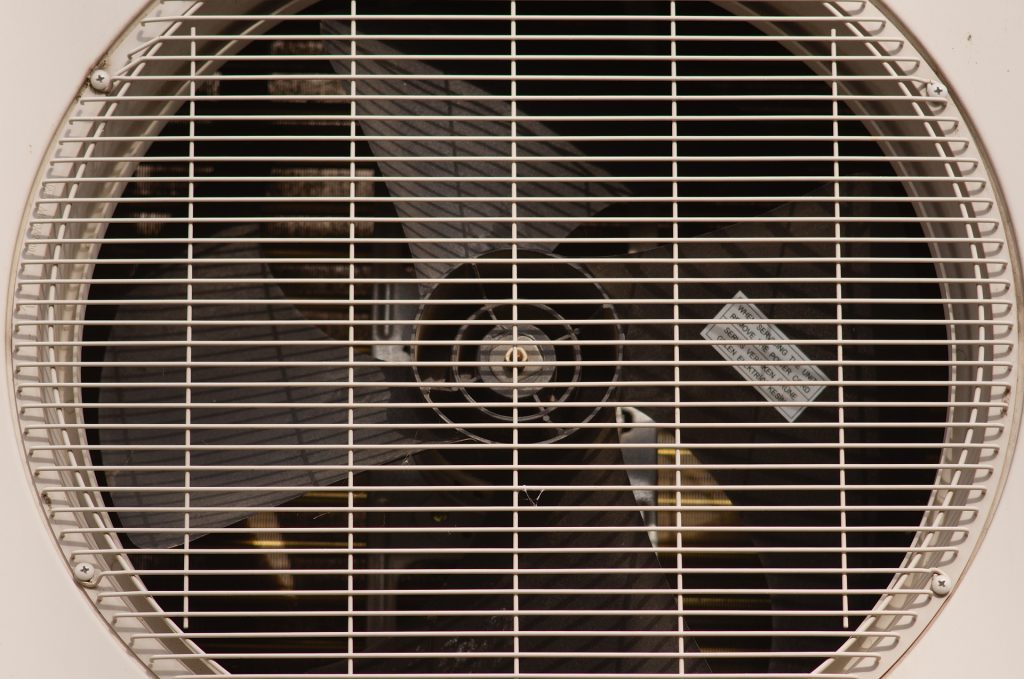Having your air conditioner pumping cold air is a soothing reprieve during summertime. To ensure that your appliance will never fail you in these hot months, you have to keep it in perfect condition through routine maintenance. One of the ways to boost your AC’s performance is by keeping a clean air conditioner drain line.
Your air conditioner drain line plays a vital role in the effective operation of your air conditioning system. Over time, molds and debris can build up in the line, making the air your unit expel harmful to breathe in. To keep it free of blockage, you need to learn how to clean an air conditioner drain line properly.
Clean Air Conditioner Drain Line: The Basics
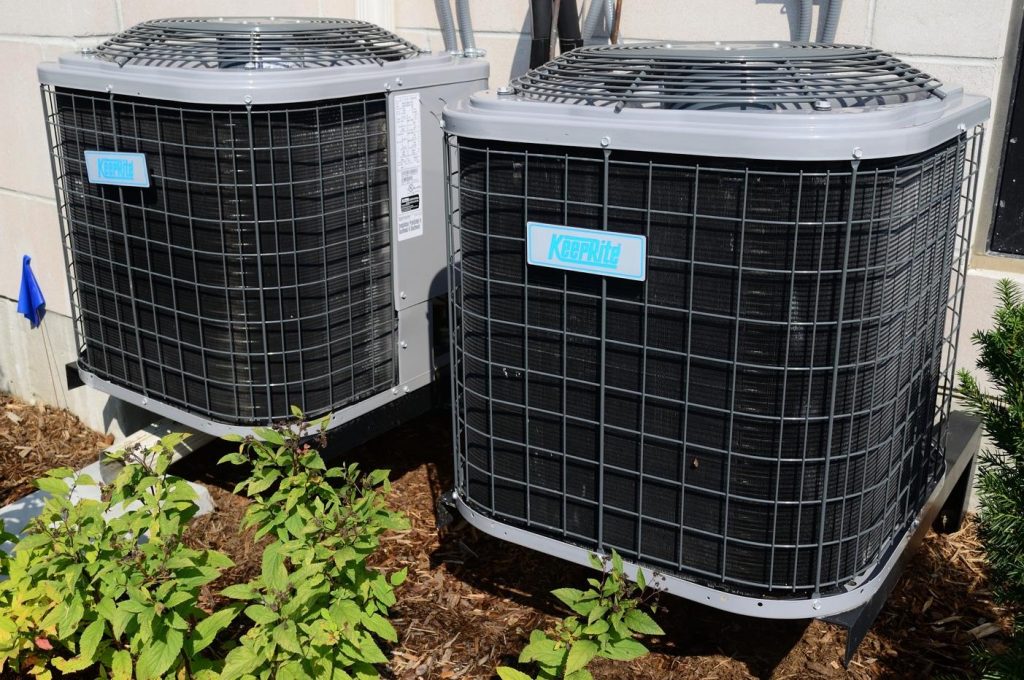
An air conditioner works by pulling moisture from the air. The drain line of your unit is responsible for removing the condensation that the evaporator coil produces by expelling it outside the house. A clogged air conditioner drain line will result in water overflowing in the condensate pan, which can then damage your AC and even your home.
Your AC’s drain line is a good breeding ground for molds to thrive. Without regular maintenance, sludge, bacteria and algae will accumulate inside. Dirt clods or wet clumps of dust can also form in the outdoor end of the drain line. If your air conditioner has not been used in a while, the drain line opening may have also become the home of certain insects.
Once there is enough buildup in the drain line, the blockage may be too large for water to pass through. This water will then back up into the condensate pan and cause leakage. Clogs can also cause raised levels of humidity and dank odor coming from your unit. If left alone, this can result in serious problems with your entire air conditioning system.
While air conditioner drain line clogs can become a serious problem, there are some easy steps you can follow in order to clear the issue. If unsure of what to do, however, it is best to consult an AZ drain cleaning specialist. There are technicians that provide comprehensive checkups and services for air conditioners in Phoenix within your budget. You can also check out our Lennox Air Conditioner reviews and “Trane Vs. Carrier Vs. Lennox” to find out the best AC for your home on your next purchase.
Signs of a Blocked Air Conditioner Drain Line
There are tell-tale signs that indicate blockage in the drain line of your AC unit. One of the most obvious is standing water. Small volume of water is not really a concern, but when there is more than usual, it may be evidence that there is something wrong with your appliance. If your unit is dripping water, it is probably because the water cannot be drained properly due to buildup.
An always-full condensate pan can be an indicator that your air conditioner drain line is clogged. Since there is blockage, the water cannot proceed down the drain line and out of the house. This should be addressed right away, as it may promote mold growth in your unit. Also look for obvious signs of water damage in the house – on the floor, near the fan or around the AC.
The moldy and musty smell coming from your AC is another possible sign of drain line issue. If the unpleasant smell spreads throughout your house, your central air system is probably compromised. Molds and mildew should be taken seriously, as they can worsen asthma and cause allergies. Check out this article for more information about various air conditioner smells.
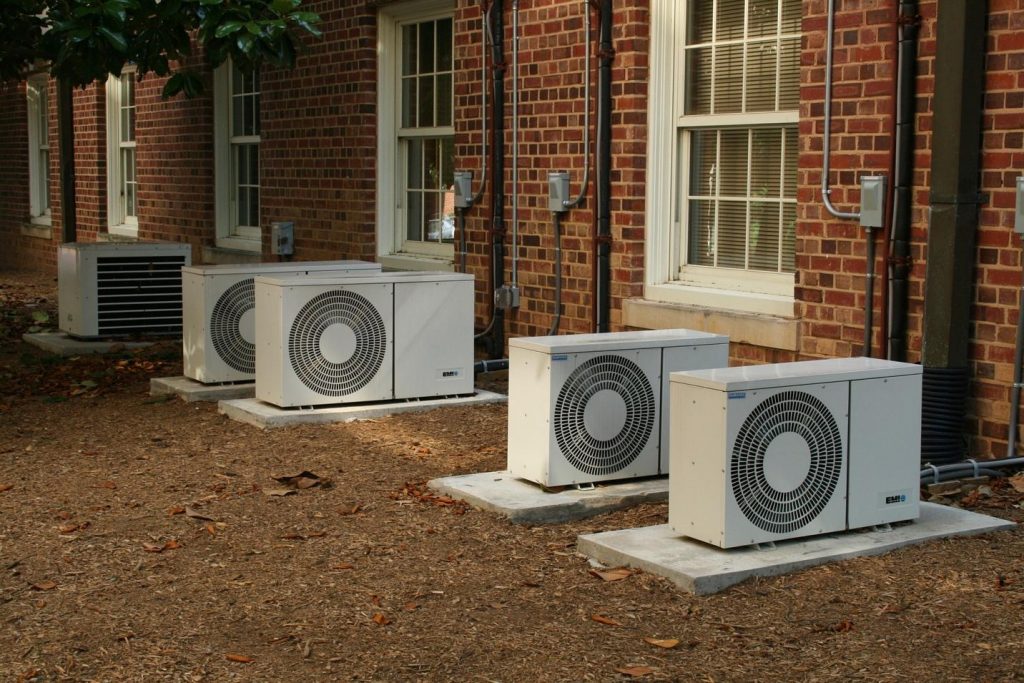
How to Clean an Air Conditioner Drain Line: Step by Step
Using vinegar is one of the effective ways when clearing air conditioner drain lines. Vinegar kills molds and other forms of bacteria and prevents buildup formation. Do this every month to keep your AC units at peak performance. The steps are easy enough to follow. You only need about ¼ cup of vinegar poured into your drain line to dissolve all the clogs inside.
- Turn off your air conditioner. Shut down the thermostat and flip the lever of your breaker to the “off” position.
- Look for the inch-long PVC pipe, typically white, gray or black in color. Follow this pipe to the end where it drains all the water. This should be your air conditioner drain line location. The air conditioner drain line outside the house should be attached to the wall, near the condenser unit.
- Once you have situated the drain line, look for the access point. Most drain lines have T-shaped tees with a cap/cover. Remove this cap and look for the blockage. If it is visible, you can take it out manually, but you should wear protective gloves.
- Start pouring the vinegar inside. If you have distilled white vinegar, use this since its increased acidity is better for cleaning buildups. Cleaning the air conditioner drain line vinegar solution should take about 30 minutes. For better results, you can leave the vinegar to stew for longer.
- To maintain your AC system and potentially improve the quality of the water it produces, it’s important to regularly flush out the pipe with water. After rinsing, check if the clogs are gone and everything is flowing freely. Have someone stand outside the house to see if water is draining out of the AC drain line. Do this process every 30 days or every three months, depending on the quality of your home water and whether you are using reverse osmosis vs distilled water.
You can also use a wet/dry vacuum to clear the drain. First, remove the paper filter in the vacuum to avoid ruining it. Hold the hose to the end of the drain line and plug the gap using a duct tape or a rag. Turn on the vacuum for two to three minutes, then turn it off. This will be enough to suck out any debris and unclog the drain.
Check out this post for some more tips on cleaning your air conditioner.

Ways to Prevent Clogs in Air Conditioner Drain Line
Use High Quality Air Filters
Invest in high quality air filters. Although you can save a lot with cheaper options, they do not necessarily do a thorough job filtering dust and other materials in your AC unit. With good filters, you can avoid dust from building up in the evaporator coils. This then helps prevent clogging in the drain line. Air filters should be changed regularly, every three months on average. If you have pets or smokers in the house, you should replace the filters more often.
Flush the Drain Line Regularly
Keep your drain line clean by flushing it with vinegar solution every three months. You can also use warm water. Refrain from using bleach, however, as they can damage the PVC plastic pipes, as well as break down the cement joining the fittings together. If you have to use bleach, make sure to dilute it with water using a 1:2 or 1:4 ratio. Bleach also has a strong smell, so you may opt to avoid it altogether.
Clean AC Unit Thoroughly
Regularly cleaning is the best way to prevent clogging in the air conditioner drain line outside the house. Cleaning at least once a year is usually the rule of thumb, but if you live in Arizona where air conditioning is used often, you may need to do it more frequently. Clean not only the drain line, but also the coils, fan motor and blades. With proper cleaning, there will be less chance of mold growth and water leakage in your unit.
Opt for Routine Maintenance
Regular tune-ups and maintenance extend the life span of your air conditioner and keep it in tiptop condition. Have your equipment checked routinely, once or twice a year, to ensure that it operates at its peak performance. Your trusty AC technician will be able to spot problems early on and suggest solutions before a major setback can happen. This can save you money and time on costly repairs later on.
If you’re interested for more air conditioning, heating, and water filtration blogs, you can read the next articles on “How to Change Furnace Filters“, “How to Vacuum AC System without Pump“, “Cleaning AC drain line” and “How to Get Rid of Mold in Water Softener Brine Tank“.
Frequently Asked Questions
Where is my AC drain line?
Your AC drain line is located near the condenser unit. It’s usually in the form of a pipe that extends downward.
Is bleach or vinegar better for your AC drain line?
Vinegar is the safer choice; bleach, when inhaled, can negatively impact your health. It may also damage AC drain lines made from certain materials such as PVC. While you may not like the smell of vinegar, its negative impacts in this regard are minimal.
How do you know if your AC drain line is clogged?
A clogged AC drain line will typically result in a moldy smell emanating from your air conditioner. You may also notice an overflowing drain pan and water spots around your air conditioner.
How do I stop my AC drain from clogging?
Cleaning your AC drain line regularly is a surefire way to avoid clogging. Use the steps above to clear debris before it becomes too compacted within the line.




